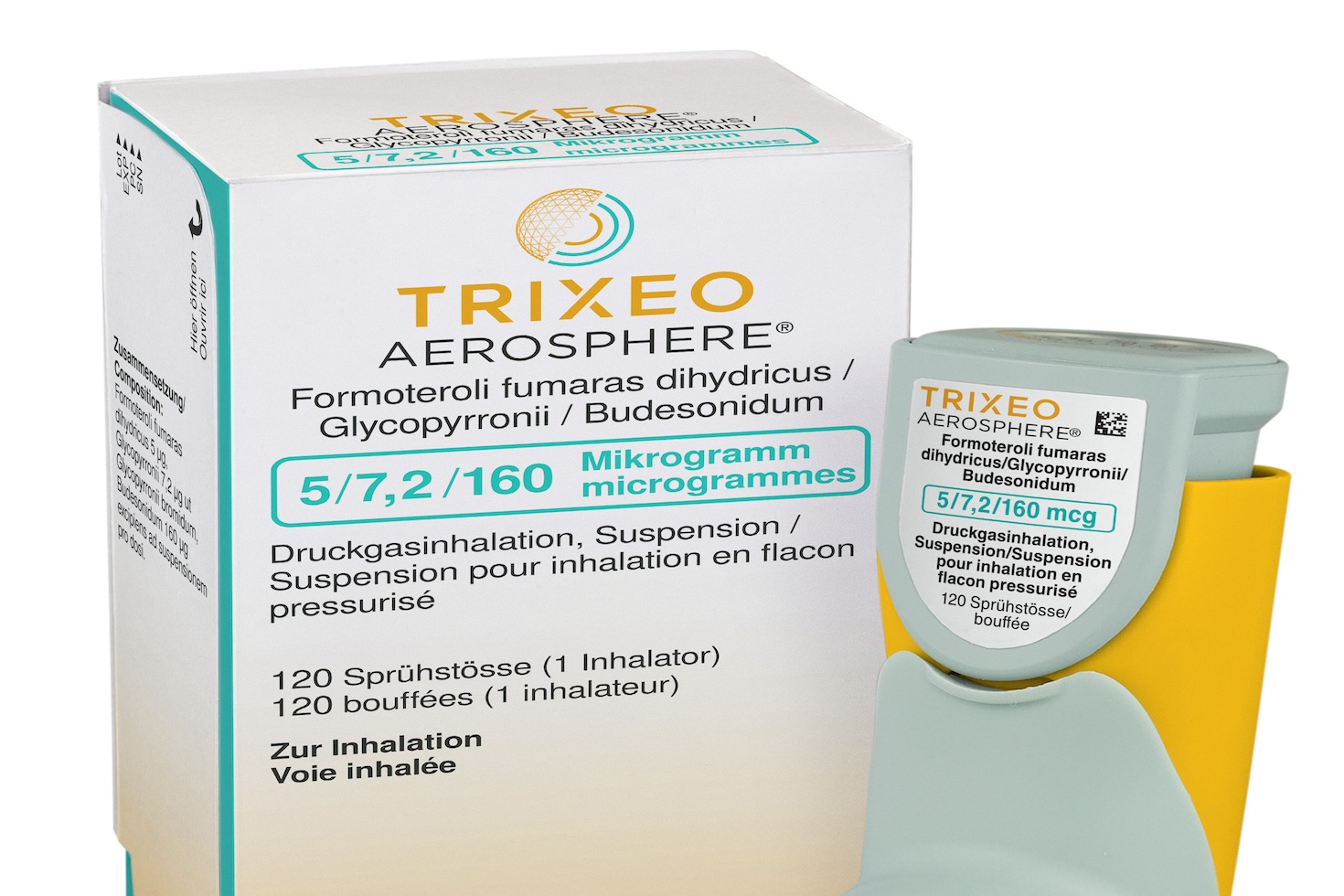AstraZeneca has won approval from the U.K. government for a low-carbon version of its Trixeo Aerosphere, a widely used therapy for chronic obstructive pulmonary disease (COPD).
The first-of-its-kind device replaces the conventional propellant found in most inhalers — which emit significant amounts of greenhouse gases — with HFO-1234ze(E), a next-generation alternative with a 99.9 percent lower climate change impact, according to the company.
The UK’s Medicines and Healthcare products Regulatory Agency approved the new device for clinical use on May 9.
Clinical trials demonstrated that the updated formulation delivers the same dose and therapeutic effect as the original version, ensuring that safety and effectiveness are not compromised.
“Inhaled medicines delivered by pressurized metered-dose inhalers (pMDIs), like Trixeo Aerosphere, are the most-used medicines in respiratory care; they’re nearly 80 percent of all global inhalers used,” Caterina Brindicci, senior vice president and global head research and development, respiratory and immunology at AstraZeneca, told Trellis in an email. “This global first demonstrates that clinicians and health systems can benefit without compromise — they can select the treatment that best addresses their patients’ needs whilst also supporting environmental goals.”
The new Trixeo will become available in the U.K. in the second half of 2025.
Health care’s large footprint
Inhalers are essential for millions of patients with respiratory issues; they are also a surprisingly large contributor to healthcare emissions. Pressurized inhalers like Trixeo typically use hydrofluorocarbon propellants, which are potent greenhouse gases. Inhaler emissions currently account for 3 percent of the U.K.’s National Health Service (NHS) carbon footprint and about 0.04 percent of total global emissions.
The wider life sciences sector is similarly carbon-intensive. A 2019 study found that pharmaceutical companies produce, on average, 48 metric tons of CO2-equivalent per $1 million in revenue — about 55 percent more emissions per dollar than the automotive industry. In total, the healthcare sector is responsible for roughly 4.5 percent of global greenhouse gas emissions, much of it tied to pharmaceutical production, procurement and use.
AstraZeneca’s move is part of its Ambition Zero Carbon strategy, which aims to transition its entire pressurized inhaler portfolio to the new propellant by 2030.
“We’re investing over $500m to transition our portfolio of medicines delivered by pMDIs to the next-generation propellant, at no additional cost to patients or the healthcare system,” Brindicci said.
Coming to the U.S.
Regulatory reviews are underway in the European Union and China, Brindicci said, for Breztri Aerosphere — the brand name under which Trixeo is sold in many markets. AstraZeneca is also working to bring the next-generation propellant inhaler to U.S. markets, though it could not confirm a timeline.
“The transition of Trixeo to the propellant with near-zero [climate impacts] means that healthcare professionals can focus on optimising outcomes for their COPD patients based on clinical nee
Read More

